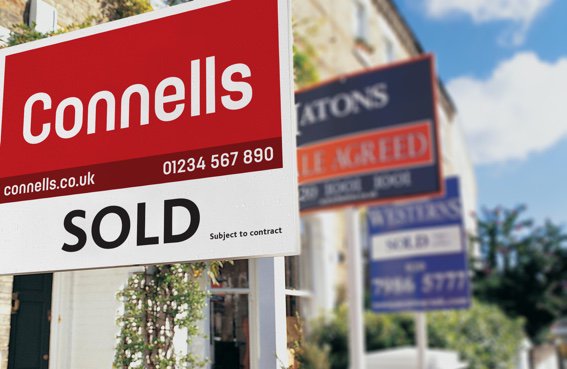Flat House Price Growth Across UK Masking Regional Variances
Flat house price growth across the UK during August 2017 is masking strong regional variances, according to the latest UK Residential Market Survey from the Royal Institution of Chartered Surveyors (RICS).
The results of the August survey show an increasingly divergent picture in key activity metrics across different parts of the country. For instance, sentiment amongst surveyors remains cautious in London and, to a lesser extent, the South East, while, further away from the capital, respondents appear to be generally more upbeat with regards to the near-term outlook.
House prices
Over the month, surveyors reported a rise of 6% in average house prices, compared to 1% in July. Although this signals a return to growth, this measure is consistent only with a marginal rise in national prices.
Behind this nationwide figure, there are significant variances across the UK. London house price growth remains stuck firmly in negative territory, recording the weakest reading since 2008. Furthermore, prices in the South East have turned a little softer, with more respondents in the region reporting a fall, rather than an increase, in prices for a third consecutive month. Both of these markets share a common characteristic in displaying the highest proportion of surveyors sensing the market is overpriced relative to all other parts of the UK.

Flat House Price Growth Across UK Masking Regional Variances
Alongside this, East Anglia and the North of England were the only other regions to return marginally negative house price growth. Elsewhere, the latest figures point to solid growth in many parts, with Northern Ireland, the North West, Scotland and the South West recording the firmest increases.
Going forward, house price expectations remain subdued over the near-term, as the UK average was again weighed down by London and the South East. At the other end of the spectrum, respondents in Northern Ireland and Scotland were most confident in seeing further price growth over the coming three months.
At the 12-month horizon, London remains the only region in which price expectations are negative, with all other regions displaying positive forecasts.
Housing demand
Nationally, there was little change in buyer enquiries during August, extending a streak of flat or modestly negative recordings into a ninth consecutive month. Alongside this, agreed sales were again broadly flat, down by 4%. As such, nationally, sales have not seen any growth since November 2016. When disaggregated, weakness in sales was largely concentrated in London, the South East, East Anglia and the North.
Meanwhile, healthy sales growth was reported in Northern Ireland, the South West and Scotland over August. Looking ahead, both near-term and 12-month sales expectations are modestly positive for the UK as a whole.
Property supply
Looking at supply, new sales instructions were down by 1%, compared with a decrease of 11% in July. Having turned progressively less negative in each of the last three months, this perhaps suggests a stabilisation in the flow of fresh listings coming onto the market. In fact, this was the least negative reading since February 2016. Even so, it must be noted that, following such a sustained period of deteriorating sales instructions, average stock levels on estate agents’ books are near an all-time low, at 43.2.
Equally, new instructions have now reportedly increased in London during four of the last six months, with a relatively smart pick-up cited in both July and August. In keeping with this, the average number of properties on agents’ books in the capital has risen from 29 to 36 since February this year. By way of contrast, virtually all other regions have seen stock levels decrease over the same period.
Lettings market
In the lettings sector, tenant demand growth was slightly stronger in August, with 19% of surveyors reporting an increase. At the same time, landlord instructions were more or less flat, and it appears that there are limited prospects of a reversal in this trend anytime soon.
Indeed, respondents were asked if they felt there would be greater numbers of landlords entering or exiting the market going forward (in light of recent and impending policy changes). Nationally, a strong majority of 61% felt that there would be more landlords exiting the market over the coming year, while just 12% believed that there would be a greater number of entrants. Moreover, for the next three years, 52% thought there would be a reduction in landlords, while just 17% felt there would be entries.
Given the current supply/demand mismatch, surveyors continue to anticipate further rent price growth over the coming 12 months. Over the next five years, respondents expect rent price growth to outpace that of house prices, averaging 3% per annum (against 2% house price inflation).
The Sales Director of West One Loans, Marie Grundy, comments on the survey results: “The housing market has faced a tough time in recent months but, despite this, we’re cautiously optimistic that the sector will pick up again in due course. A seasonal lull can be expected at this time of year, although it may take time for the market to regain a more positive note, which we believe will happen. In large part, this is because the chasm between supply and demand persists and cannot be quickly fixed, but also because we are in a period of prolonged economic uncertainty, which is only set to continue as Brexit negotiations take place.”









